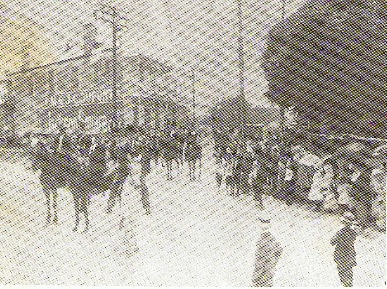
On April 2, 1822, a large southwest section of Lafourche Interior Parish,
to be known as Terrebonn, went on its own. Two other parishes were later
formed from the remainder, Assumption and Lafourche. History of the area
can be traced back to the 1760's when white settlers began arriving along
the shores of the moss-draped bayous. Prominent among these was Captain
Dautrive. In 1765 an influx of Acadians exiled from Cananda came. The
first group numbered about 250 and came by way of Santa Domingo on February
4. Capt. Dautrive help them become established.

The Houmas Indians, from which Houma got its name, were the principal group
of indians occupying the area, having arrived here sometime after 1776 following
a conflict with the Tunica Indian Tribe in what is now West Feliciana Parish.
They originally formed six settlements, but remnants of present day Houmas
Indians are generally located south of Houma in the lower bayou country.
They have no reservation since most of them have intermarried with other races.

At the time Terrebonne was made a parish, only a few settlements dotted the
fertile banks of its bayous. Luxurious vegetation and virgin forest abounded
throughout the area. Admist this wilderness, the bear, panther, and deer dwelt.
Cranes, Herons and other aquatic birds filled the streams and swamps, and the
alligator disputed the settler's right to paddle his pirogue through some of the
principal bayous.

Henry Schuyler Thibodaux, then a state senator representing Lafourche Interior,
sponsored the statute that created the Parish on April 2, 1822. As a result,
he has been called the "Father of Terrebonne." Thibodaux, originally from
Albany, New York, moved to the banks of the Mississippi River in what is now
St. James Parish. He finally settled in the vicinety of the present day
St. Bridget Church near Schriever, LA. He and his wife Brigette Belanger,
aquired a great deal of property up and down Bayou Terrebonne, including all
of what is now the main part of Houma.

In 1824, Thibodaux was appointed acting governor of Louisiana to replace Thomas
Robertson who was named judge of the U.S. District Court by the President of the
United States. He died in 1827 and Halfway Cementary where he is buried between
Houma and Thibodaux is marked by a state historical marker.

The origin of the name of Terrebonne appears to have been derived from the Darbounne
family which settled in parts of the parish. Origianal government maps of the area
long before Terrebonne became a parish show Bayou Terrebonne as Bayou Darbonne.
Later the name evolved into Terrebonne but it appears logical that the parish
was named after the bayou which apparently was named after the family.
Terrebonne means "good earth" in French, and because of its rich alluvial soil
that has produced such bontiful harvests, was a good selection of hte name of the
parish. Some theorist suggest that Thibodaux named Terrebonne after a parish in
Canada where his father=in-law lived. This seems unlikely since the bayou was
called Darbonne and Terrebonne long before the parish was created.